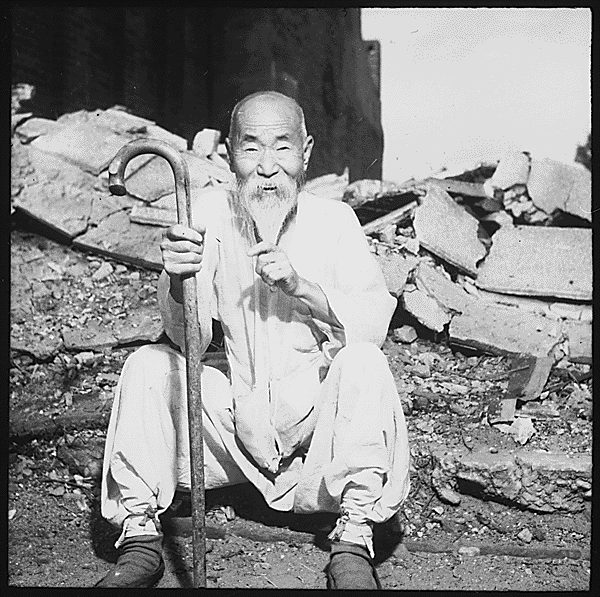I can already see myself trying to track down these locations to stitch this media on to the current landscape upon my return to Seoul in August.
Yesterday the Digital Public Library of America (@dpla) launched and it is a good site with some great, intuitive navigation choices. It is responsive and user-friendly and a real departure from some academic/public research sites that can range anywhere from good to abysmal in terms of aesthetics and navigation. So good on them. If you haven’t seen it yet, give it a try. It reminds me when I used to work more directly with the (digital and physical) library side of the equation and primary sources in general. I love this stuff more than I can articulate here. So much so that I wanted to relate a few of the gems that I discovered in my initial searches. I am predictable in that I first searched for my hometown (Youngstown, Ohio) followed by Pittsburgh (sort of my second hometown) followed by Seoul, Korea. These are some of the gems that I found from the Korea search, in particular.
I don’t have any great commentary to go along with these aside from the fact that archival materials are incredibly relevant to our modern learning, especially ones that are as openly available as these. We can build our understanding of place from our past, from the history of that place. I hope people begin (if they haven’t already) adding these to HistoryPin or creating their own digital landscapes of a place, a city, or a neighborhood, complete with this media laced in, images of people who lived and worked and learned there as well. A truly representative (time and space) presentation of place. I am saving these all for a day when my digital capacity is at a point when Seoul will come alive with its past and present in one big mashup of meaning.
An old Korean man takes a rest on the street in front of destroyed buildings, in Seoul., 08/20/1951

KOREAN ELECTIONS, SEOUL, KOREA, 05/10/1948
This is the only one that really requires a bit of context. Korea was freed from Japanese rule in 1945 at the end of World War II. The Americans liberated Korea from the South to the 38th Parallel (north of Seoul) and the Soviet Union liberated Korea from North to the 38th Parallel (Pyongyang et al). The country was then supposed to be handed back to the Koreans once they had set up a government. The Soviet Union and the US encouraged the development of governments more in line with theirs (Communist, Democratic) and the country began to split. The split was made official in 1948 when both the North and South held elections for their respective areas of the country. This footage is from Election Day in Seoul in 1948. Priceless footage, but one, in hindsight, marking the beginning of a split Korea that still haunts us today. The footage was edited slightly for time, but the original can be found care of the National Archive at http://research.archives.gov/description/20894.
Korean elections, Seoul (1948): Archival footage from the National Archives from Michael Gallagher on Vimeo.
CHRISTMAS, KOREA ; REFUGEES, SEOUL ; LABORERS ; GEN MILBURN, SEOUL ; CHRISTMAS TREE, SEOUL ; TWO MEN…
This one I include because some of the footage of Korean citizens making their way through a cold Korea’s wintertime is revealing, especially the poignancy of the characters at the end of the footage, rough but noble. And the baby being drawn around on a sled is adorable. The footage was edited slightly for time, but the original can be found care of the National Archive at http://research.archives.gov/description/22396
Christmas in Daegu, Korea (1947-1950) care of the National Archives from Michael Gallagher on Vimeo.
INOCULATION AND DUSTING PHASE, SEOUL, KOREA, 03/28/1952
Anyone that has been in Seoul or anywhere in Korea will recognize this ‘dusting’ as it is a rite of summer. Korea’s winters are brutal (see previous footage) and the summers are humid and sticky, perfect breeding grounds for very aggressive mosquitos. This was quite an issue in Korea (up until relatively recently) and it was dealt with in this manner, ie the ‘dusting’. The modern ritual is enacted by a man on a very loud track spewing cloudy insecticide in every neighborhood of Seoul. He is referred to as the Mogi (모기) Man, ie the Mosquito Man. Every expat is invariably unnerved by their first encounter with the Mogi Man, but grows to accept, or at least ignore, them. This video shows the 1952 equivalent to the Mogi Man, a handheld device that literally blows some sort of insecticide all over the person, including down their pants and in the fronts of their shirts. The reaction of the woman to this treatment towards the end of the footage is wonderful.
The footage was edited slightly for time, but the original can be found care of the National Archive at http://research.archives.gov/description/25320
Archival Footage from Korea care of the National Archives: Inoculations and Dusting (circa 1947-1950) from Michael Gallagher on Vimeo.